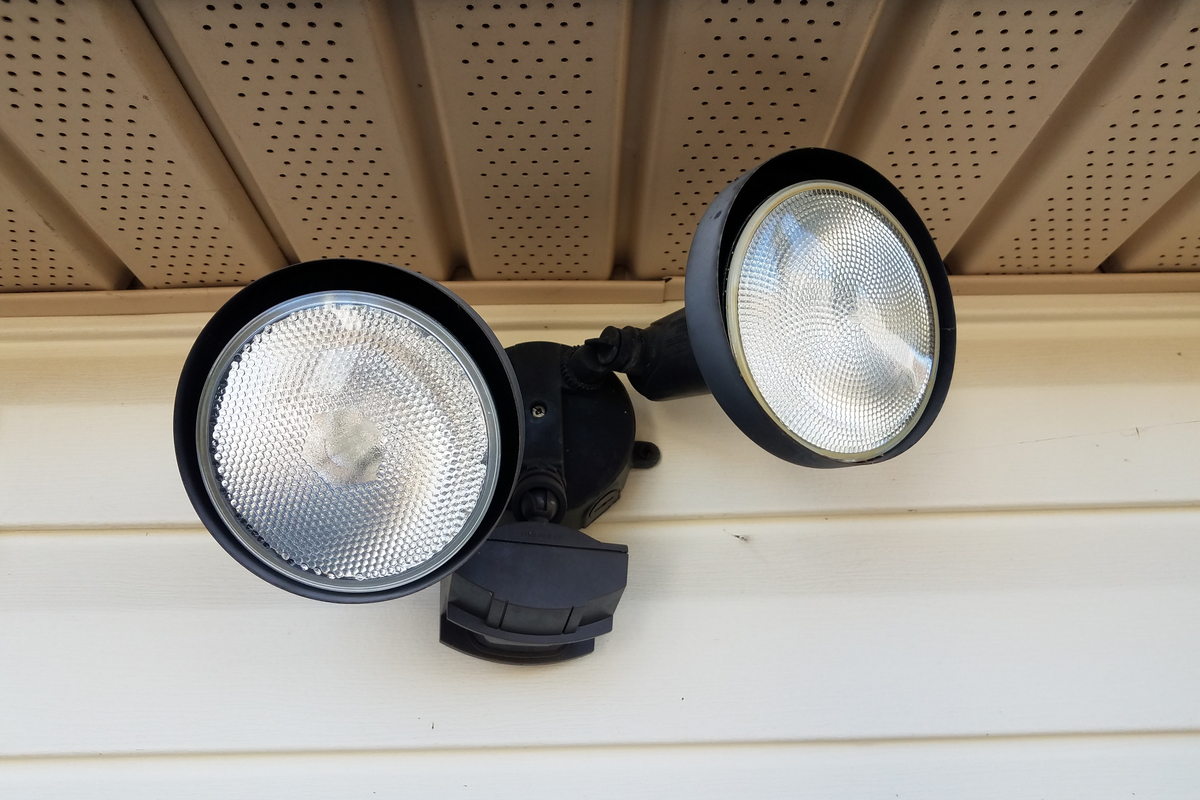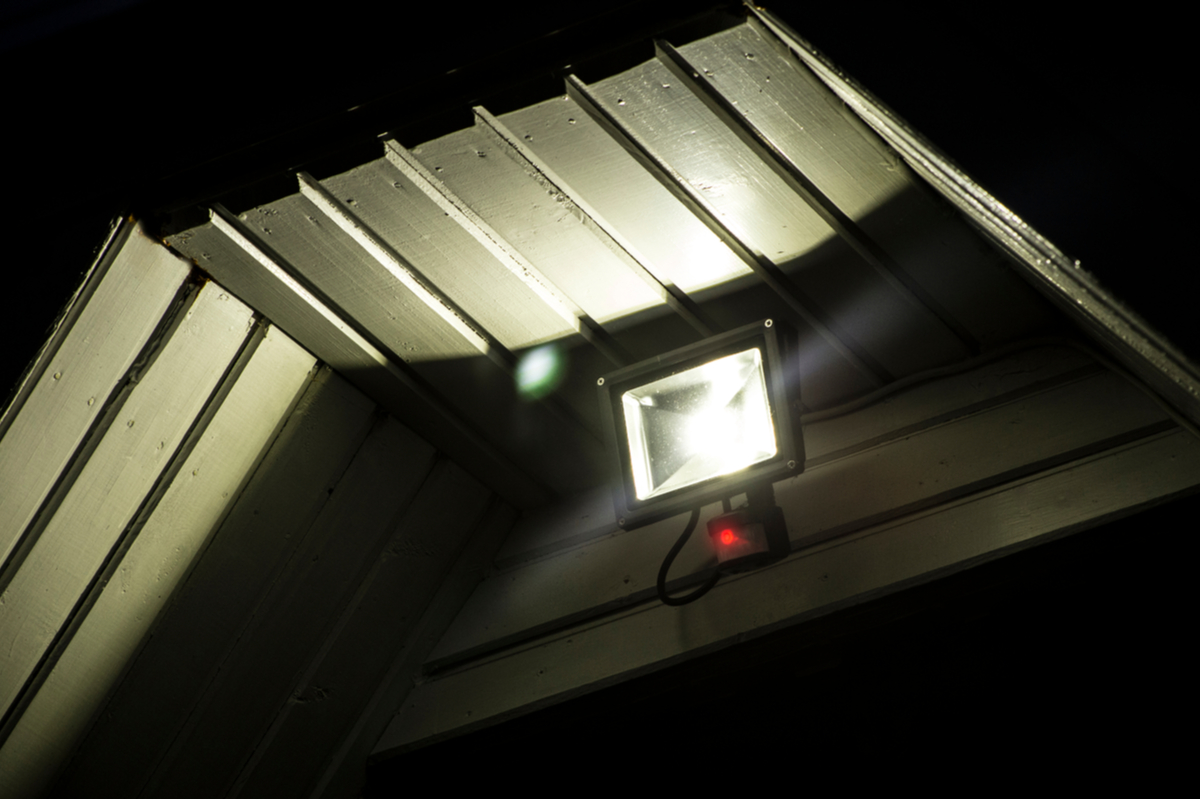Your home is your haven, and it should be where you and your family feel the safest. Keeping your home protected with a home security system is the most comprehensive way to guard it, but if you’re not ready for that financial commitment, you can always install a motion-detecting security light outside. To answer any questions you may have, we’ll discuss the benefits of motion sensor lights and how to install them quickly so you and your family can sleep a little easier.

Benefits of a security light with a motion sensor
While they don’t come with all the bells and whistles of a complete home security system, outdoor motion sensor security lights give you a lot of bang for your buck when it comes to keeping your home secure.
Improve security
Of course, the primary benefit of a security light with a motion sensor is that it deters would-be intruders. Not only would an intruder be caught off-guard by the sudden burst of light, but they are likely to retreat and move along since they don’t want to be seen.
Promote safety
Falls happen in the driveways and walkways of homes not only when the ground is wet or iced over, but also when it’s too dark to see any trip hazards. With a motion sensor light, every time you enter or exit your home, you can be confident that you’ll have a light to illuminate the way, preventing slips, trips, and falls.
Convenience
Outdoor motion sensor lights also mean you don’t have to remember to turn your outdoor lights on and off every time the sun goes down or a guest arrives. The light simply turns on when your movement is detected, with no effort on your part.
Budget-friendly
Since full home security systems can be pricey, motion sensor security lights present a more economical way to secure the home without breaking the bank.
Where to install motion sensor lights
For the motion sensor on your outdoor security light to be most effective, install it in a location with no obstructions, like trees or parked cars, that would otherwise prevent it from sensing movements in the area. Ensure the sensor is approximately 10 feet above ground level and in such a position where any movement that occurs in the area will travel across the motion detector instead of moving directly toward or away from it. Cross movement is more easily detected by the sensor, so make sure it’s perpendicular to any walking path.
These lights are also most useful around areas that an intruder would most likely try to access. The most common entry points are your house’s doors (back and front) and your garage, so be sure to illuminate those points of entry.

How to install a security light with a motion sensor
What you’ll need
- Screwdriver
- Voltage tester
- Wire stripper/cutter
Step 1: Shut off the power and remove the old light
The first step is the most important one for your safety. Be sure to shut off the power to the light before you start dismantling the original light so you don’t accidentally electrocute yourself. Once there is no longer power to the socket, use a screwdriver to remove the existing fixture, then use your voltage tester to test the exposed wires, ensuring the power is completely off.
Step 2: Wire the security light
Next, connect the wires of your new light to the wiring in the mount. Use wire connectors to match up and connect the three types of wires so that the new light will have power.
- Hotwire (black)
- Neutral wire (white)
- Ground wire (typically green or copper)
Step 3: Mount the new light fixture
Once the wires are properly connected, follow the manufacturer’s instructions on the light fixture to mount it into place. The light you purchased should include all parts and hardware needed to mount it. If not, contact the manufacturer for further instructions and to obtain the correct materials.
Now, it’s time to test the light. Walk across it, in front of it, around it, far away, and close by. Feel free to have some fun by sneaking up on it or moving around corners so you can get a feel for how and where the sensor detects movement. On many models, you can adjust the sensitivity and range of the motion sensor in case the light is turning on too often or not detecting movement well enough.
Outdoor lights on your home are essential to your safety, security, and convenience, and these security lights with motion sensors can provide you and your family with much-needed peace of mind.
Editors' Recommendations
- How much does it cost to install an EV adapter in your garage?
- 3 YouTube videos that will teach you how to repair drywall quickly and easily
- What colors go with gray? How to make a neutral hue pop in your home
- How to propagate lucky bamboo in 5 easy steps so you don’t have to buy it
- Buying a forever home? This site shows how future flooding could affect your neighborhood



